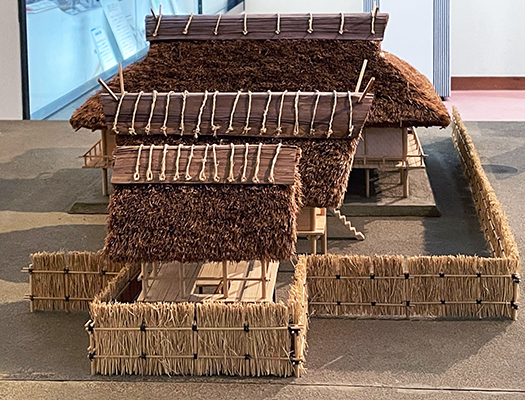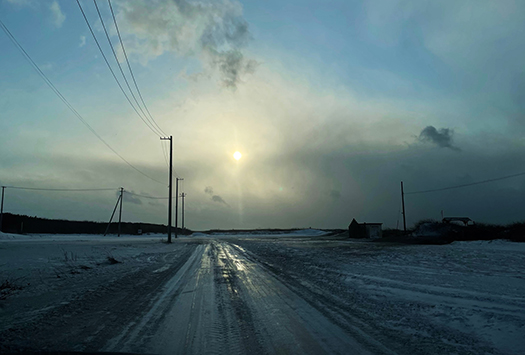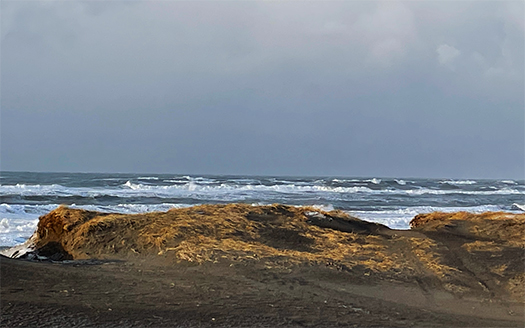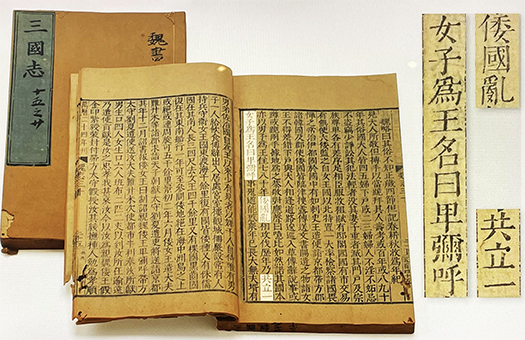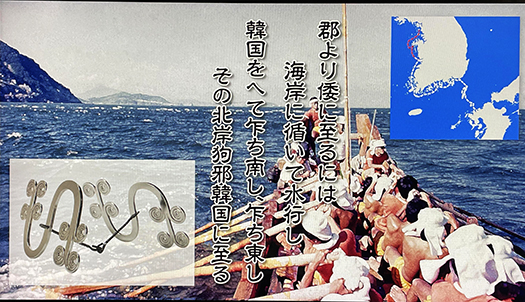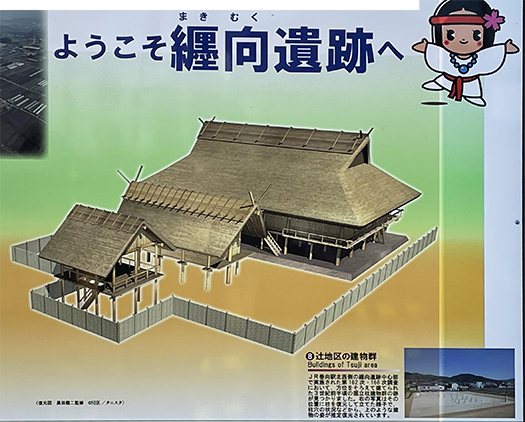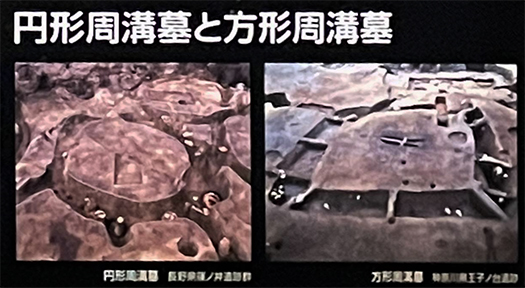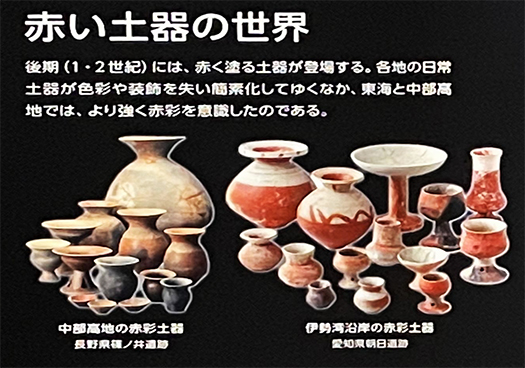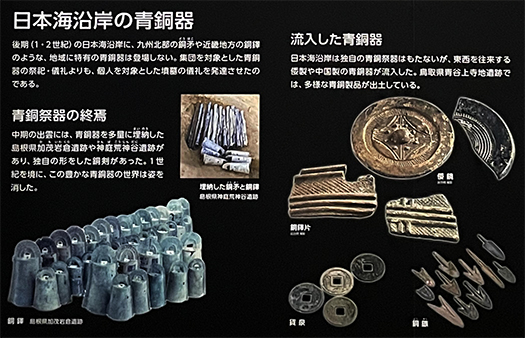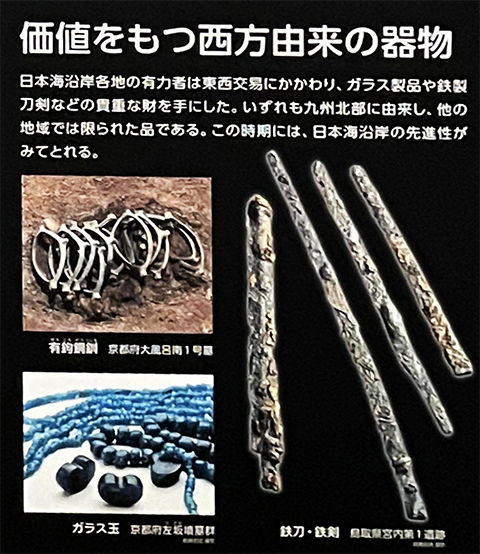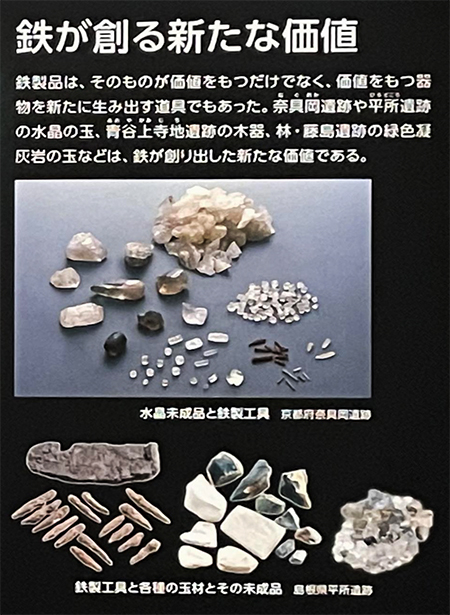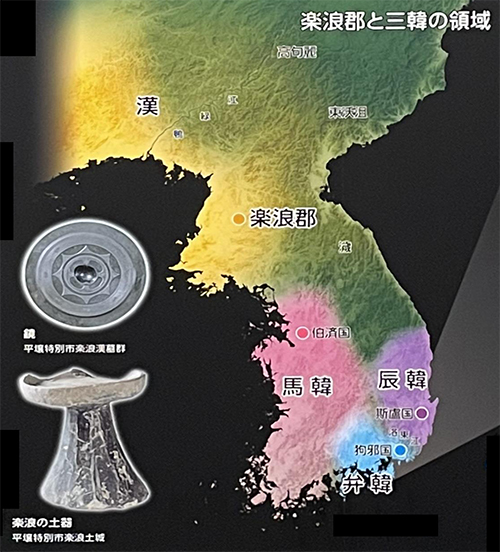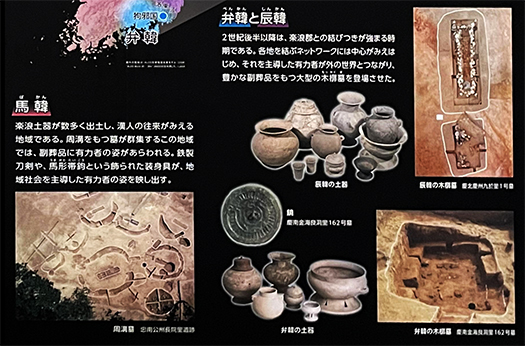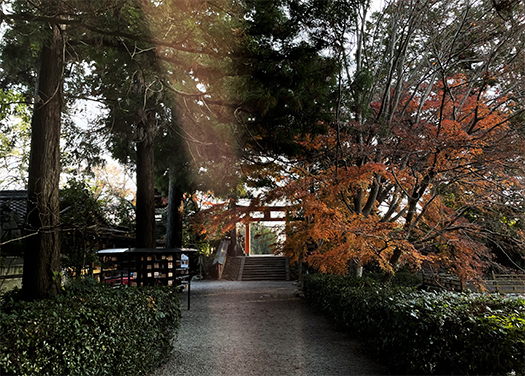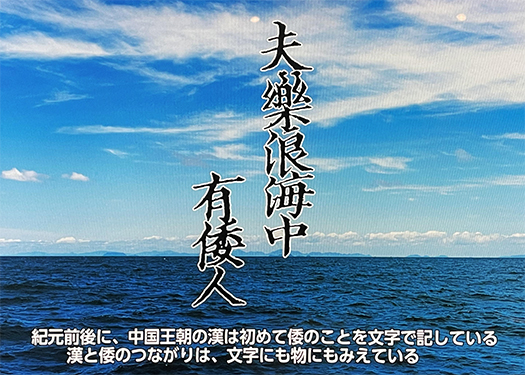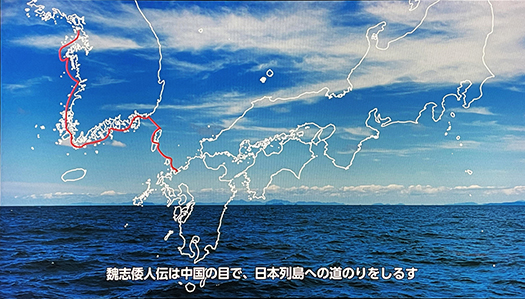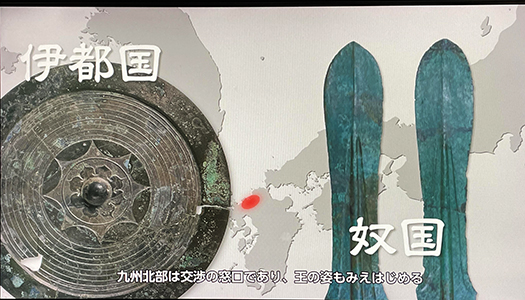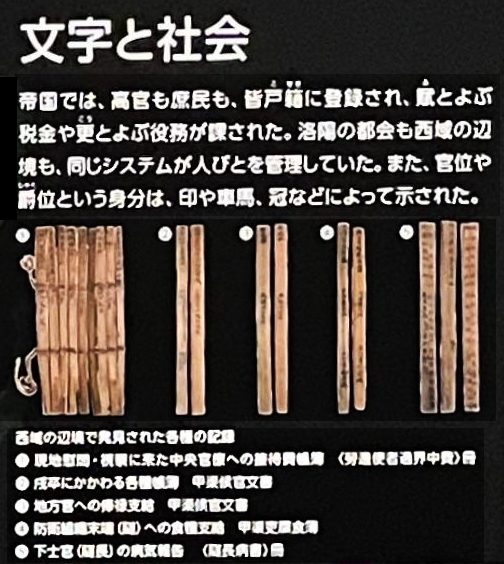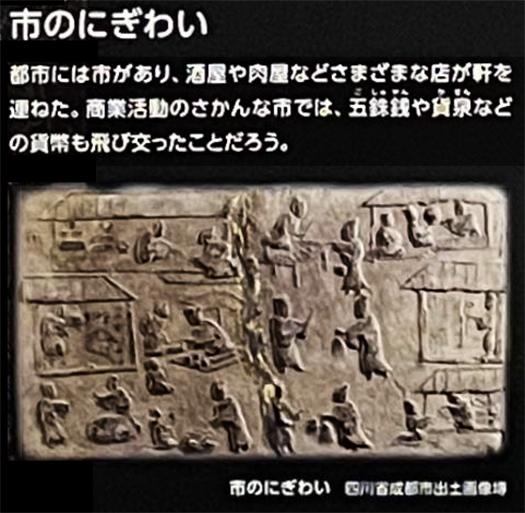
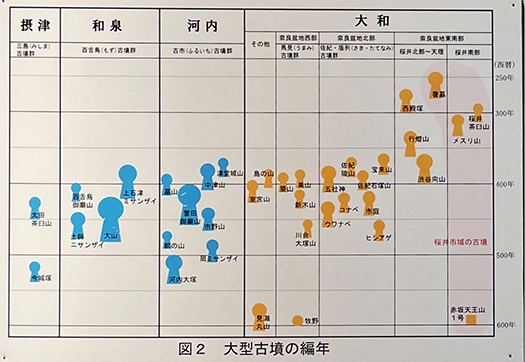


纏向遺跡は3世紀の頃のヤマト王権の姿を伝えているけれど、
この三輪山を仰ぎ見る王権の地にはほど近くに箸墓古墳が造営されている。
行ってみると宮内庁によって陵墓管理されていることがわかる。
〜箸墓古墳は奈良県桜井市箸中にある古墳。形状は前方後円墳。
実際の被葬者は不明だが宮内庁により「大市墓」として
第7代孝霊天皇皇女の倭迹迹日百襲姫命の墓に治定されている。
また笠井新也の研究以来、邪馬台国の女王卑弥呼の墓とする学説がある。
出現期古墳の中でも最古級と考えられている前方後円墳。〜
宮内庁としては天皇陵ではないけれど、王族の陵墓とは考えている。
特殊な地位を保持した王族の女性が被葬されていることが確定している。
纏向遺跡が第10代崇神天皇の王宮であるとすると、
この箸墓は「大叔母」にあたる倭迹迹日百襲姫命のために造営されたとなる。
造営年代の特定ではほぼ同時期に建立されたことになっている。
この倭迹迹日百襲姫命は、三輪山の神霊である大物主の妻となった。
〜然れども其の神、常に昼は見えずして夜のみ来す。倭迹迹姫命は夫に語りて
君常に昼は見えずして夜のみ来す。分明に其の尊顔を視ること得ず。願わくば
暫留まりたまへ。明旦に仰ぎて美麗しき威儀を勤たてまつらむと欲ふといふ。
大神対へて曰はく「言理灼然なり、吾明旦に汝が櫛笥に入りて居らむ。
願はくば吾が形にな驚きましそ」とのたまふ。ここで倭迹迹姫命は
心の内で密かに怪しんだが明くる朝を待って櫛笥を見ればまことに美麗な小蛇。
その長さ太さは衣紐ぐらいであった。それに驚いて叫んだ。
大神は恥じて人の形とになって其の妻に謂りて曰はく「汝、忍びずして吾に羞せつ。
吾還りて汝に羞せむ」とのたまふ。よって大空をかけて御諸山に登ってしまった。
ここで倭迹迹姫命仰ぎ見て悔いて座り込んだ。則ち箸に陰を憧きて薨りましぬ。
乃ち大市に葬りまつる。故、時人其の墓を号けて箸墓と謂ふ。〜
一方で崇神天皇の御代に人口の半数もの餓死者が出たとき、
神意が天皇に告げて、三輪山(御諸山)をしっかり祀るために大物主所縁の人物を
神主にせよとされ、そのようにしたところ災禍は沈静化したという。
このような説話が二重写しになっている。考古的には同時代と比定される。
事実としては天候不順によって冷害か日照りが奈良盆地を襲ったのかも知れない。
初期の王権とは水田を土木工事で造営し、灌漑作業で水源を管理して
水田農耕を一元的に支配した存在だったことは明らか。
国というものは、建国神話に託された強い意図を持って創建されていくものであって、
こうした神話・説話にはそういった志向性が表現されているのでしょう。
事実はそこに反映されその意図に添って解釈された。
スフィンクスの謎かけに近いけれど、相当の真実も見えてくると思います。
English version⬇
The First Posteroposterior Circular Tumulus “Chopstick Tomb” 37,000 Years of the Japanese Archipelago – 46
Myths and archeological facts are synchronized in the area of the tombs of Chopedombs and Muko-no-mukai. History and archaeology coexist in a quiet landscape. …
The Mimamukai ruins tell the story of the Yamato kingdom in the 3rd century, but the tomb of Chopstick Tomb was built not far from the site of the kingdom looking up at Mt.
Chopstick tomb tombs were built not far from the site of this royal authority looking up at Mt.
The tombs are managed by the Imperial Household Agency.
〜The tomb mound is located in Hashinaka, Sakurai City, Nara Prefecture. The shape of the tomb is a forward-rear circular mound.
The actual burial site is unknown, but the Imperial Household Agency has designated the tomb as “Oichi no Haka,” which means “Great City Tomb.
The actual burial site is unknown, but it has been designated by the Imperial Household Agency as the tomb of the 7th Emperor Koryo’s daughter, Wajaku-no-Hyakuso-no-Mikoto.
Since the research of Kasai Shinya, there is a theory that it may be the tomb of Himiko, the Queen of Yamataikoku.
The tomb is considered to be one of the oldest tombs of the emergence period. ~.
The Imperial Household Agency considers it to be a royal mausoleum, although it is not an emperor’s tomb.
It has been established that a royal female who held a special position is buried there.
Assuming that the Mimamukai site is the royal palace of the 10th Emperor Sublime.
This chopstick tomb was built for the “great-aunt” of the 10th Emperor Sublime.
According to the date of construction, they were built at about the same time.
This Wajaku-no-Tsukihime-no-Mikoto became the wife of Ohmononushi, the spirit of Mount Miwa.
〜However, the deity is always unseen in the daytime and comes only at night. Yamatotsu-hime-no-Mikoto spoke to her husband and said
You are always unseen by day and come only by night. You cannot see his face clearly. I pray that you may stay for a while.
I beg you to stay for a while. I desire to see you perform a beautiful ceremony on the first day of the new year.
I wish to enter your comb-over on Mingtan.
I wish to be surprised at the shape I take. At this point, Yamatotake-no-Mikoto
But when she waited for the next morning and looked into the comb chest, she saw a small serpent of great beauty.
The length and thickness of the snake was about the length and thickness of a garment cord. Startled by this, he exclaimed, “What a beautiful snake!
Ashamed, the goddess took human form and said to his wife, “Thou art ashamed of me, for thou hast not been patient with me.
I will return and shame you. So he took to the skies and climbed up to the top of Mt.
Here, he looked up at the deity and sat down, repenting. He sat down in repentance, and was buried with a shadow on his chopsticks.
He was buried in Oichi. The tomb is called “Chopstick Tomb” by the people of the time. 〜The first half of the second half of the third century BC
On the other hand, when half of the population starved to death during the reign of Emperor Sojin
The divine will told the Emperor to appoint a person related to Omotonushi as the chief deity in order to firmly worship Mount Miwa (Mt. Omorozan).
The emperor told the deity to appoint a person related to Omotoshu as the chief priest to ensure the worship of Mt.
This is a duplicate of the legend. Archaeologically, they are comparable to the same period.
In fact, it is possible that cold or drought struck the Nara Basin due to bad weather.
Early kingship was based on the idea of building rice paddies by civil engineering and managing the water supply through irrigation work.
It is clear that the early kings were the centralized rulers of rice paddies and agriculture.
A nation is founded with a strong intention, which is entrusted in the founding myths.
These myths and legends may express such an orientation.
Facts were reflected in them and interpreted according to their intentions.
It is almost like the riddle of the Sphinx, but I think it also reveals a considerable amount of truth.
Posted on 12月 18th, 2022 by 三木 奎吾
Filed under: 日本社会・文化研究, 歴史探訪 | No Comments »




